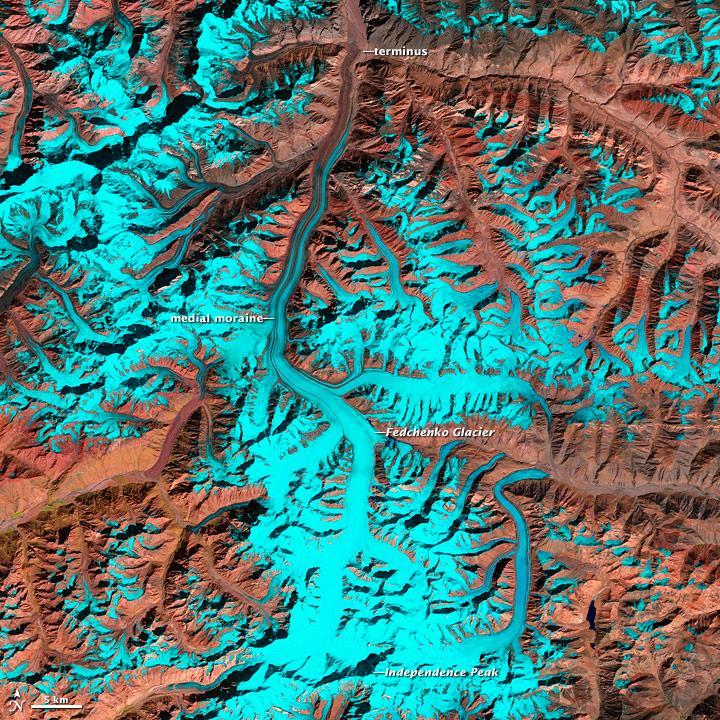The Pamir Mountains #

Among them is Fedchenko, which at 77 km (47 mi) is the longest glacier outside of the Earths polar regions. The melt waters of Fedchenko Glacier feed into the Muksu, Vakhsh, and Amu Darya Rivers before eventually making their way to the Aral Sea some 2,000 km (1,200 mi) away.
In arid central Eurasia, the snow- and glacier-covered mountains serve as the regions water towers. Nearly 90% of the Central Eurasian population relies on water from the mountains for energy, agricultural, and drinking purposes. In this false-color image from 2 October 2011, the Fedchenko Glacier can be seen as it snakes its way northward from the western slopes of Independence Peak.
The sparsely vegetated, arid mountains appear reddish-brown, while snow and ice are bright cyan. (Due to the angle of sunlight, this image may cause an optical illusion known as relief inversion.) Throughout the glaciers 77 km course, it drops 2,500 m (8,200 ft) in elevation.
At the highest elevations, the glacier is snow and ice covered; but as it flows downstream, it picks up rockfall debris. Reddish-hued debris lines running parallel to the flow direction begin about midway down the glaciers length. These medial moraines widen as the glacier descends. At its terminus, the glacier is completely covered by debris.